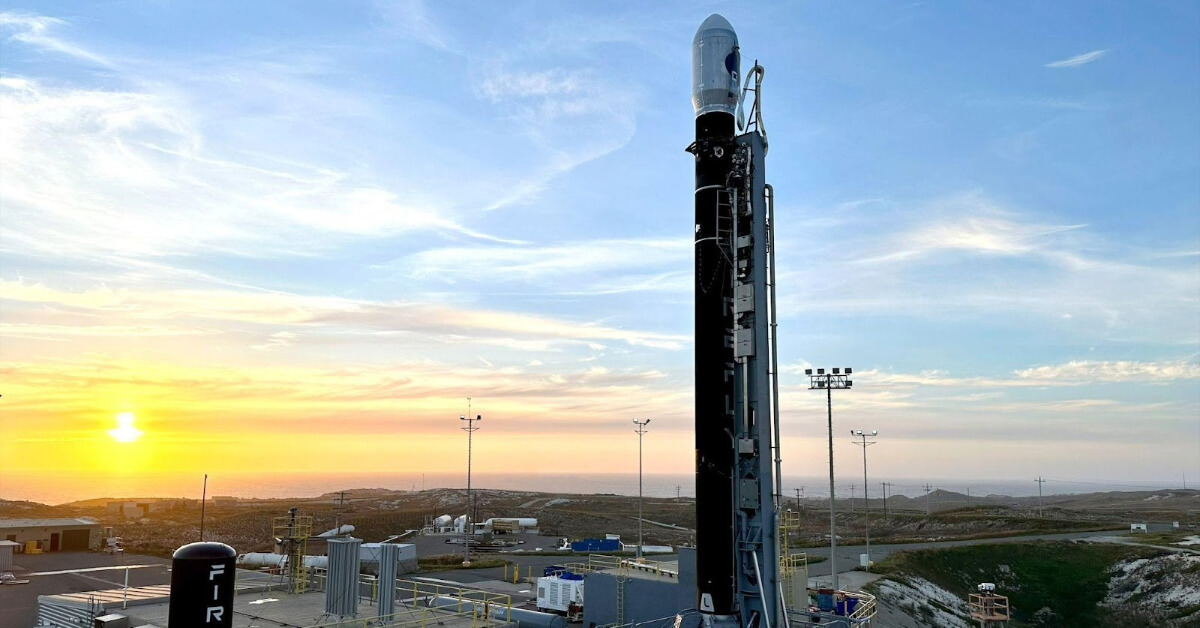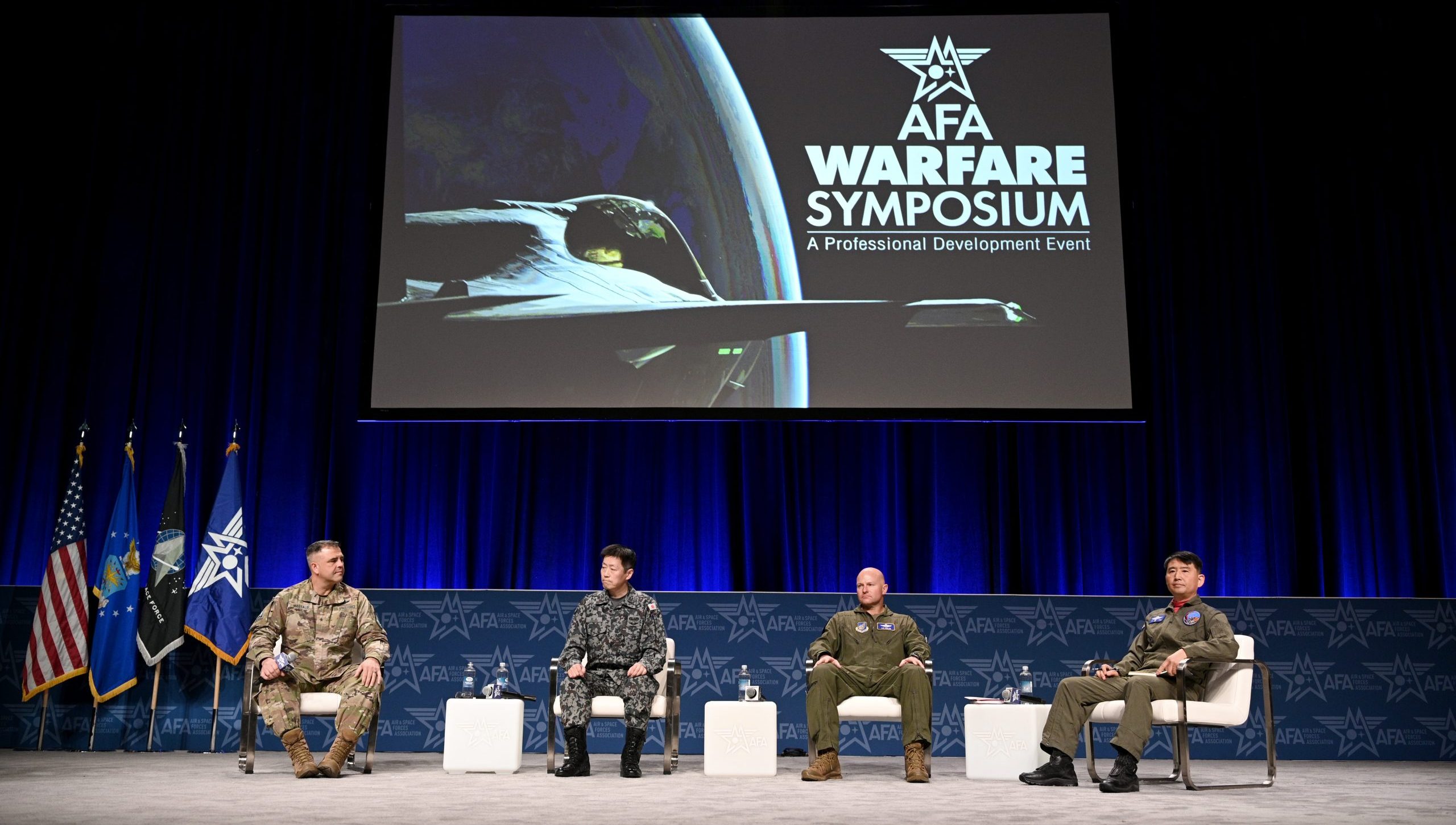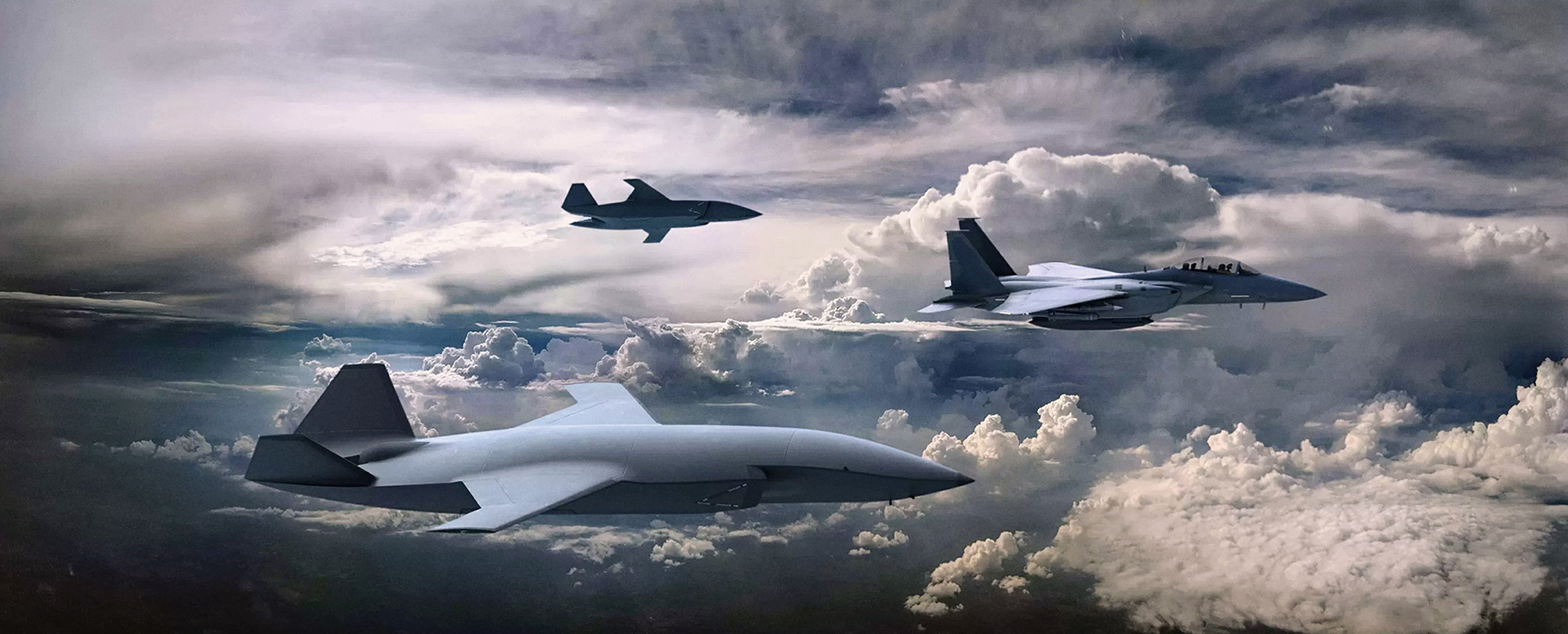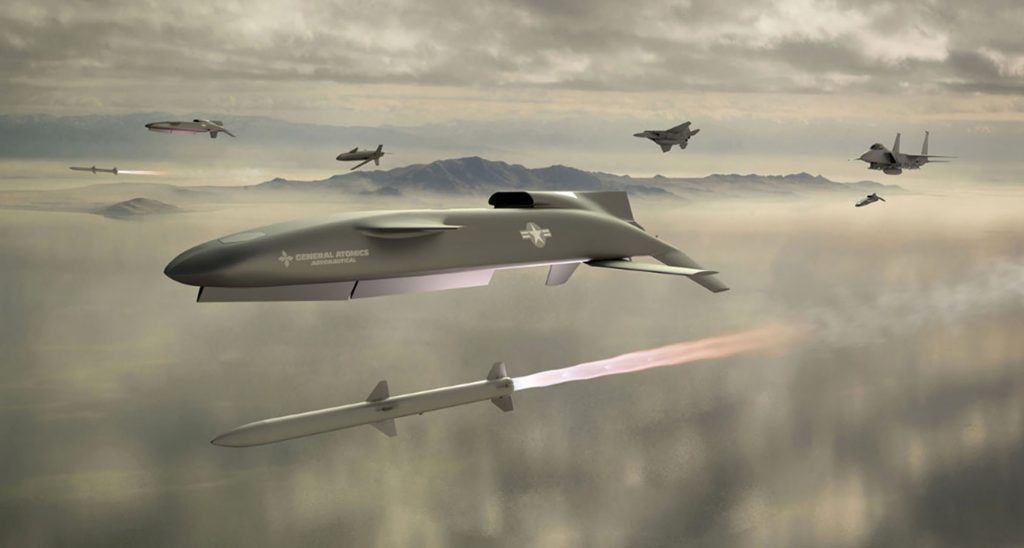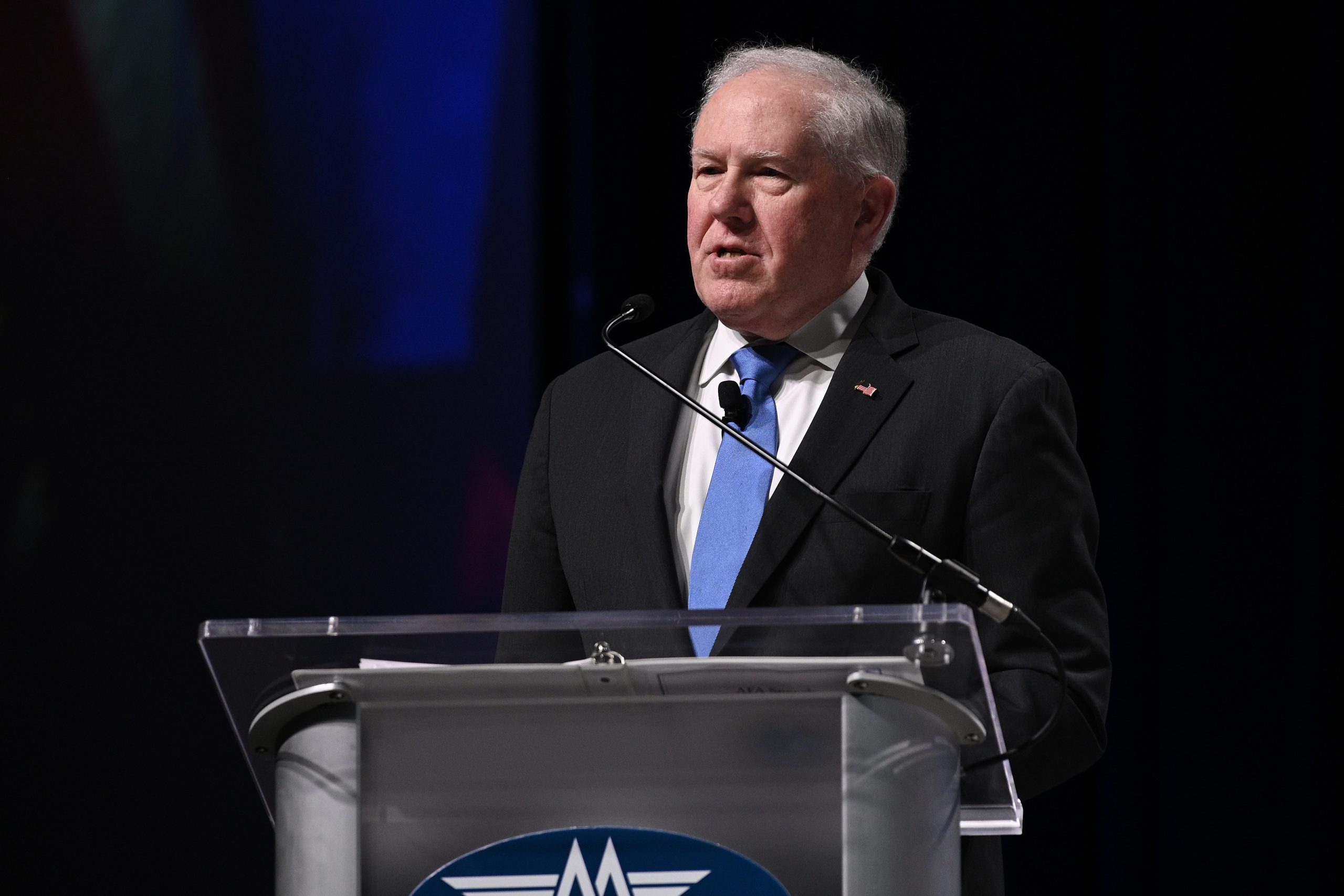AURORA, Colo.—Chief of Space Operations Gen. B. Chance Saltzman has rarely missed a chance in recent months to highlight the Space Force’s “Victus Nox” mission that procured and launched a satellite in record-breaking time. During his “State of the Space Force” keynote address at the AFA Warfare Symposium, he did so again, noting with pride that the satellite went from a warehouse to in orbit in just five days in September 2023.
Later Saltzman told reporters he wants to go even faster for the next mission, dubbed “Victus Haze,” which is planned for 2025.
“I still think we have margin in the schedule,” Saltzman said Feb. 13. “And so in Victus Haze, we’re going to set some standards that say nope, we’ve got to compress this more. Five days from warehouse to on-orbit operations is pretty fast. But in the grand scheme of things, when you’re moving at 17,500 miles per hour, five days is still a long time, and a lot can happen in five days. And so I’m going to be pressing the team to continue to reduce that critical path down to hours and hours and hours, rather than days.”
Finding ways to compress timelines for future launches is all part of the Space Force’s plans for what it calls “tactically responsive space.” And multiple Space Force leaders indicated they are eager to push forward after the success of Victus Nox and prepare for a future where the service can respond at a moment’s notice.
“This is a very cost-effective way and rapid reaction capability for us to be able to respond to the combat command,” Lt. Gen. DeAnna M. Burt, deputy chief of space operations for operations, cyber, and nuclear, said during a panel discussion.
It could also be a pivotal capability for the service as it goes through a yearslong pivot toward proliferation—launching hundreds of smaller satellites across different orbits—added Lt. Gen. Douglas A. Schiess, head of Space Forces-Space, the USSF’s component within U.S. Space Command.
“Say we’re not in a proliferated architecture yet, and something is taken out or we have a failure or something like that,” Schiess said. “This gives us the ability to go out, put something together and put it on orbit and maybe get a capability way back faster than we could.”
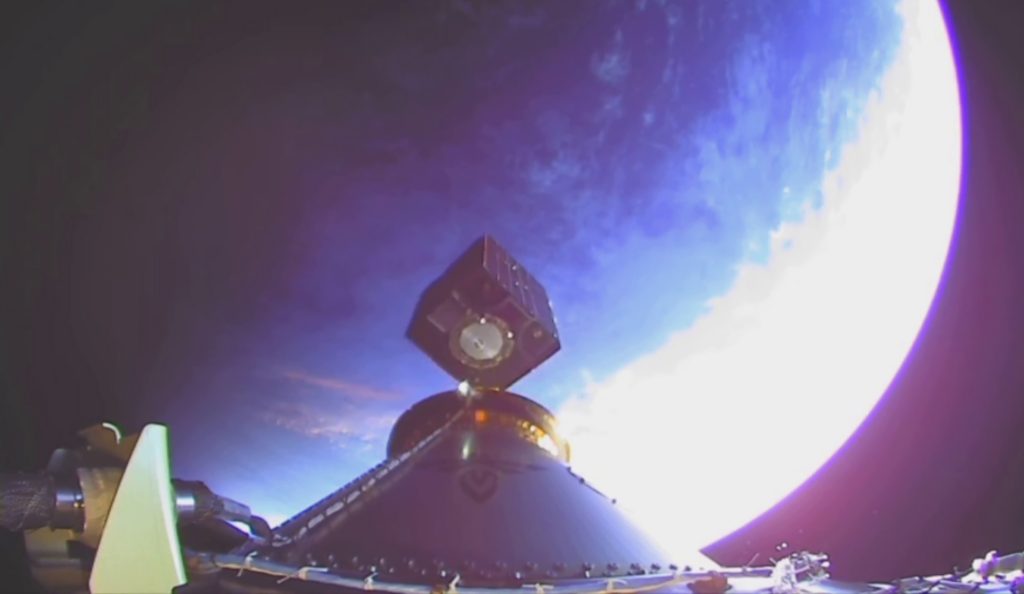
On top of that, Schiess noted, it would give commanders more options for responding to new developments and threats from adversaries.
“Here’s our capability to get after that and get something up there as fast as possible, not wait around until we find out what it is from other sources,” Schiess said.
Already, Schiess later told reporters, he has spoken with Lt. Gen. Philip A. Garrant, the new head of Space Systems Command, on the process for operationalizing tactically responsive space—what is likely to be a complex undertaking that will involve identifying specific needs and figuring out proper channels of communication and command and control.
The process is still in its early stages, Schiess said, but Victus Haze will provide valuable “reps and sets” for the Space Force to practice the concept after the initial success of Victus Nox. In particular, Saltzman and Burt stressed the importance of reviewing processes to eliminate downtime across the board.
“We learned lessons when the weather delayed the launch for a certain time, there was lightning in the area, it delayed the launch,” Saltzman said of Victus Nox. “What can we do in terms of serial processing to take advantage of that delay, so that we could more rapidly check out the system when it’s on orbit?”
The Space Force and its partner for Victus Haze, the Defense Innovation Unit, have yet to announce any contracts, but Saltzman said in his keynote address that he expects the launch to happen next year.
The concept of responsive space has been around for years, noted retired Gen. Kevin P. Chilton of the Mitchell Institute for Aerospace Studies. But it has gained momentum in recent years—highlighted by Victus Nox—in part because of the growth in launch providers and falling launch costs, making such missions more cost-effective.
It’s also a capability that China may seek to develop, warned Maj. Gen. Gregory Gagnon, deputy chief of space operations for intelligence.
“The conditions are right inside our U.S. industrial base in order to make this concept a reality today, and we kind of did act one and proved it. Let me give you all a moment of caution that conditions may be ripe for the Beijing environment to be able to do that as well,” said Gagnon, who noted that China has sought to capitalize on the collapse of Russia’s space launch market to build up its own capabilities.
